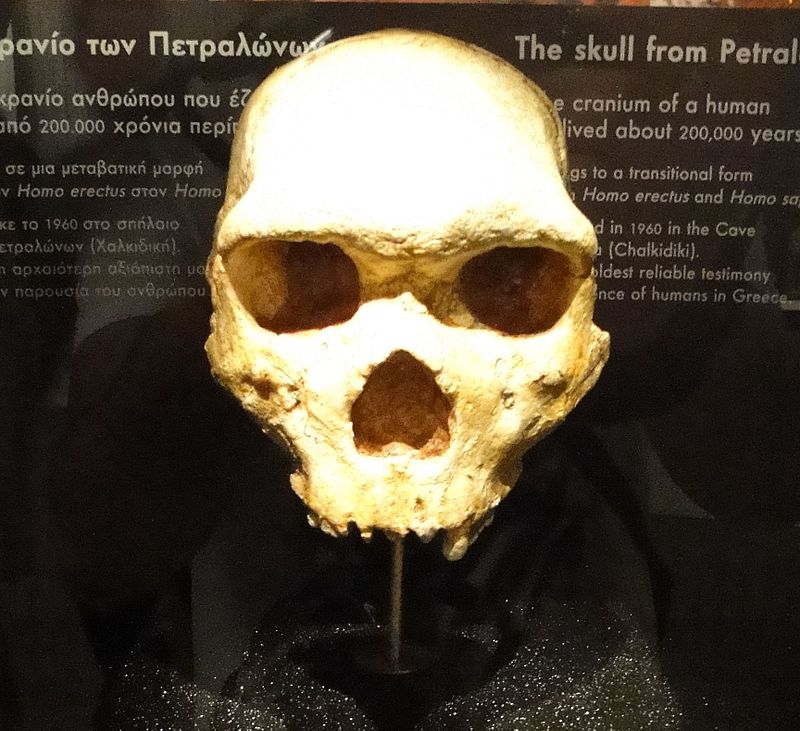
Two Greek scientists have recently provided a credible explanation of why there has been little evidence of the Hominids’ presence in Greece.
Vangelis Tourloukis of the University of Tübingen in Germany and Panagiotis Karkanas of Ephoreia of Palaeoanthropology–Speleology of Southern Greece set out to debunk the theory that hominids never really set down roots in the geographical area of what is now modern Greece.
The country should be filled with hominid bones and stone tools. Its location makes it the perfect gateway to Europe for the earliest hominids leaving Africa and, even during dry and cold spells that made many other parts of the world uninhabitable, Greece remained pleasant.
Yet, the evidence is thin. Anthropologists have found some hand axes and a few skulls, a Homo heidelbergensis in the cave of Petralona and two Neanderthals in Apidima.
In addition, footprints were discovered on Crete from the prehistoric past. Experts came to the conclusion that the footprints had been made by ancient human ancestors 5.6 million years ago, making them by far the oldest footprints ever discovered in Europe.
Writing in Quaternary Science Reviews, Tourloukis and Karkanas looked to the region’s geology to solve the puzzle of the missing hominids, reviewing a range of previous studies.
Changing sea level destroyed evidence of hominid presence in Greece
One thing they considered was the changing sea level over time. During cold periods, more of the world’s water is locked in polar ice sheets and glaciers and sea level recedes, exposing parts of the seafloor. When it gets warm again, the ice melts, and the ocean rises.
The Greek scientists found that during parts of the Early and Middle Pleistocene, much of the Aegean Sea, east of Greece, was dry land. In fact, the total area that was exposed then equals the area of the Greek Peninsula today (more than 50,000 square miles).
If you assume all dry land was a possible living site of hominids, that means half of the potential archaeological record is now gone, submerged beneath the Aegean, the researchers say.
Catastrophic flooding and earthquakes
Back on dry land, a range of climatic and geologic factors influenced the likelihood that bones and artifacts were preserved. One of the biggest contributors was water: Rivers and streams eroded the landscape, washing sediments (and artifacts) away and piling them up somewhere else.
In the Early and Middle Pleistocene, climatic conditions led to periodic catastrophic flooding, the researchers noted, and “archaeological assemblages subjected to disturbance, reworking or total destruction every few thousands, hundreds or even tens of years.”
Tectonic activity, the movement within Earth’s crust and mantle that shapes topography, caused further problems. Greece is a very tectonically active region, and in the Early and Middle Pleistocene, the crust was being stretched.
At one point, the stretching changed directions, raising blocks of earth and exposing bones and artifacts to destructive erosion for thousands of years. Meanwhile, some blocks were buried, which helped protect artifacts. Such basins are probably where most potential archaeological sites are today.
Another issue is Greece’s rugged, steep terrain. More than half of the country is mountainous or hilly, areas where landslides can easily bury or destroy archaeological sites.
The two Greek scientists believe that due to the above reasons only two to five percent of the Hominid record may have survived.
See all the latest news from Greece and the world at Greekreporter.com. Contact our newsroom to report an update or send your story, photos and videos. Follow GR on Google News and subscribe here to our daily email!



